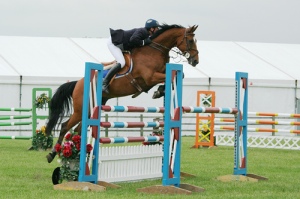My guest is D.J. Adamson, an award-winning author who has recently released her noir mystery novel Admit to Mayhem. Her family roots grow deep in the Midwest where she sets much of her work. She juggles her time between her own desk and teaching others writing at two Los Angeles Colleges. Today she’s going to talk about how to use animals in your stories to reveal character and theme.
.
********************************
I remember Stephen King once saying that if you were writing horror, you need to put a dog or child into the plot because the vulnerability of someone innocent creates horror without a need for a lot of words or description. In his novella Secret Window, the protagonist finds his dog on his doorstep, killed. Horrible! Immediately the reader feels the protagonist is threatened by someone evil. And the reader is waiting for the next horrible act. Blake Synder’s book Save the Cat! The Last Book on Screenwriting You’ll Ever Need picks up on another animal use. Synder states that if the character does something nice, like saving a cat, then the character is immediately endeared to the reader. By the way, I think the Cohen Brother’s offered a giggle to Synder’s book by having their character in Inside Llewyn Davis literally save a cat and carry it around most of the movie. A joke the audience may not have gotten, but those of us who write immediately understood.
I use a cat in my novel Admit to Mayhem, a Lillian Dove Mystery series to do both what King and Synder suggest. I want the use of Bacardi to say something about my protagonist:
 Bacardi’s my cat, named for his brown and yellow coloring and my first drinking preference of rum and Coke. At the age of twelve, if you add enough cola, you forget all about the sweet tang of rum. Plus, Bacardi’s hair frizzed out from his body as if he’d stuck his claw in a light socket. When my hair was shorter, I’d woken up many a morning with that same look.
Bacardi’s my cat, named for his brown and yellow coloring and my first drinking preference of rum and Coke. At the age of twelve, if you add enough cola, you forget all about the sweet tang of rum. Plus, Bacardi’s hair frizzed out from his body as if he’d stuck his claw in a light socket. When my hair was shorter, I’d woken up many a morning with that same look.
My protagonist Lillian Dove is a recovered alcoholic with a 5 year sobriety; however, sobriety is not a dominate theme in the book. This is not another novel about a protagonist that cannot keep sober (be it alcohol or drugs). Instead, Lillian’s objective in the novel and series is to take on life anew, with all its emotional, behavioral, and mystery challenges. With the description and affinity to her pet, I wanted the reader to get a feel for Lillian’s troubling past without doing a lot of backstory.
The overall plot of the novel begins when Lillian discovers a house fire and she becomes the only eyewitness to criminal arson. She is in jeopardy from someone who wants to stop her from identifying them. The plot is paced with events to create Lillian’s angst, but again, I wanted to offer my reader the vicarious ability to feel her anxiety and fear. So, I put Bacardi in jeopardy:
It came to me then what was missing.
“Where’s Bacardi? Bacardi’s missing.”
“Who?”
“My cat.” I got down on my hands and knees and looked under the couch. Dust bunnies but no Bacardi. “Bacardi, where are you?” …I got in my car and drove one block after another, up one street and then the next, calling his name out into the night… “Bacardi?” I followed behind them, “Here kitty, kitty, kitty.”
When I did get back to the condo, I couldn’t stay still. I searched each and every cranny I could think where he might possibly have crawled. Then I went back outside.
I went without the Mustang this time. I walked and walked and walked the night away, calling.
Several cats answered my calls. They patted quietly up to me purring as they rubbed against my legs. Others merely meowed back a hello. None were Bacardi. I know Bacardi’s yowl. It wasn’t until I came dragging back to the condo, exhausted, with a voice hoarse and feelings of failure that I allowed myself to truly take in the idea, “What if he never comes back? What if something bad happened to him?”
Pike?
Pike is the major antagonist, and while Lillian may be threatened by Pike, and her mother may be threatened, having him possibly taken Bacardi is almost more than she can emotionally handle.
My novel is an amateur-sleuth novel which I classify as a soft-edged Midwest Noir. But no matter whether a writer is developing a conventional mystery, cozy, thriller or horror novel, the use of animals can help offer themes and provide movement of plot.
******************
With a contrary attitude to life and an addiction for independence, Lillian Dove admits she has not been a success in life. In fact, she considers failing as one of her addictions. Yet, when she comes across a suspicious house fire with a history of arson and murder, she instinctively attempts to help someone trapped. Lillian becomes the only possible eyewitness to criminal arson, and her life begins to spiral out of control.
********************
You can get Admit To Mayhem at:
http://www.amazon.com/Admit-Mayhem-Lillian-Dove-Mystery-ebook/dp/B00N1L0RVC/
.
To learn more DJ and her books, go to:
Website: http://djadamson.com/
Facebook: https://www.facebook.com/pages/D-J-Adamson/154012774648993?ref=hl
Twitter: http://twitter.com/@adamson_dj





















